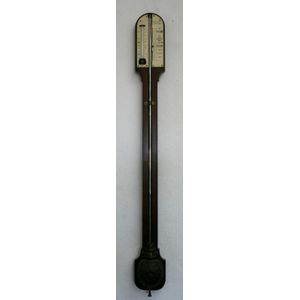Eastern Hunting Scene Pole Screen
You must be a subscriber, and be logged in to view price and dealer details.
Subscribe Now to view actual auction price for this item
When you subscribe, you have the option of setting the currency in which to display prices to $Au, $US, $NZ or Stg.
- Mahogany - Mahogany is a dense, close grained red-coloured timber from the West Indies and Central America. It was first imported into Europe in the the early 18th century and its use continued through the 19th century. It was popular for furniture making because of its strength, the wide boards available, the distinctive grain on some boards, termed flame mahogany and the rich warm colour of the timber when it was polished.. The "flame" was produced where a limb grew out from the trunk of the tree, and this timber was usually sliced into veneers for feature panels on doors, backs and cornices.
Some terms used to describe mahogany relate to the country from which it originally came, such as "Cuban" mahogany, "Honduras" mahogany etc. However unless the wood has been tested the names assigned are more a selling feature, rather than a true indication of the timber's origin. - Petit Point - Petit point embroidery is a type of needlework that is characterized by small, delicate stitches worked onto a fine canvas or mesh fabric. The stitches used in petit point embroidery are typically very small and precise, and are worked in diagonal rows to create a smooth, even surface.
Petit point embroidery is often used to create intricate designs and patterns, such as floral motifs, landscapes, and portraits. The embroidery can be done in a variety of colours and can be quite detailed and realistic.
The technique of petit point embroidery has been used for centuries in various forms of decorative art, including tapestries, cushions, and clothing. It was particularly popular in the 17th and 18th centuries in Europe, where it was used to create elaborate wall hangings and furniture coverings.
Petit point embroidery is still practiced by many artisans and is used to create a wide range of decorative items, including jewellery, handbags, and home decor. The technique requires patience and skill, as the small stitches can be time-consuming to work and require a steady hand. - William Iv - William IV was King of the United Kingdom and King of Hanover from 26 June 1830 until his death in 1837, and in English furniture design it represented the brief period between the end of the Regency period, and the beginning of the Victorian period.
This item has been included into following indexes:
Visually similar items

A fine and large cast iron umbrella and stick stand, French, mid 19th century, 69 cm high, 94 cm wide, 26 cm deep

Emeralite bankers lamp numbered 8734 'H.G. McFaddin & Co. New York U.S.A.' crack to green shade. Height 46 cm

Victorian R McAdam, Dumfries mercury stick barometer. Combination thermometer. Ivory plate to top, mahogany body. Label noting repair 1968. Length 92 cm

A William IV rosewood card table, the top opens to reveal green baize-raised on a turned column with acanthus leaf decoration, quatrefoil base with lion paw feet. 91 cm x 45 cm x 75 cm
